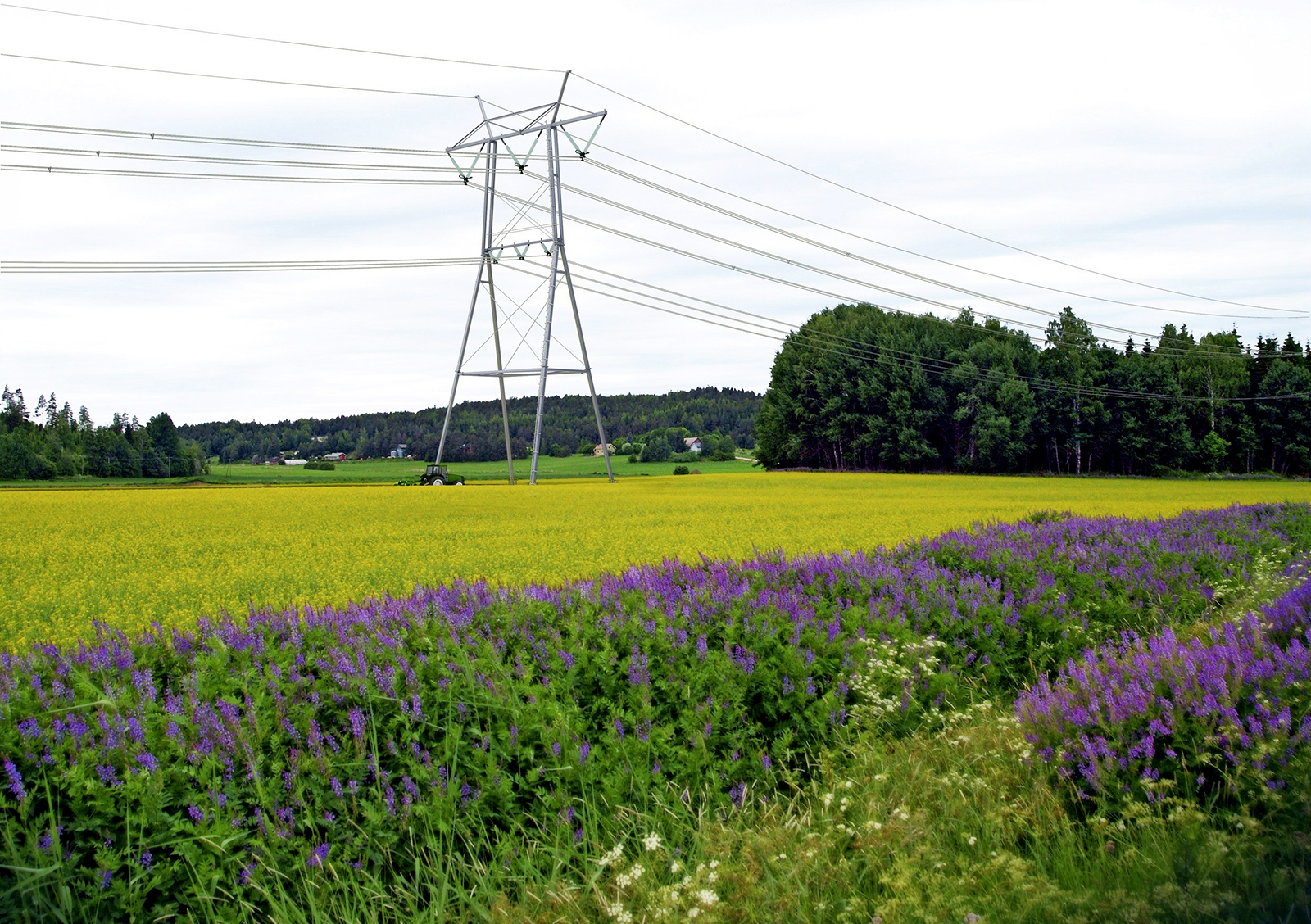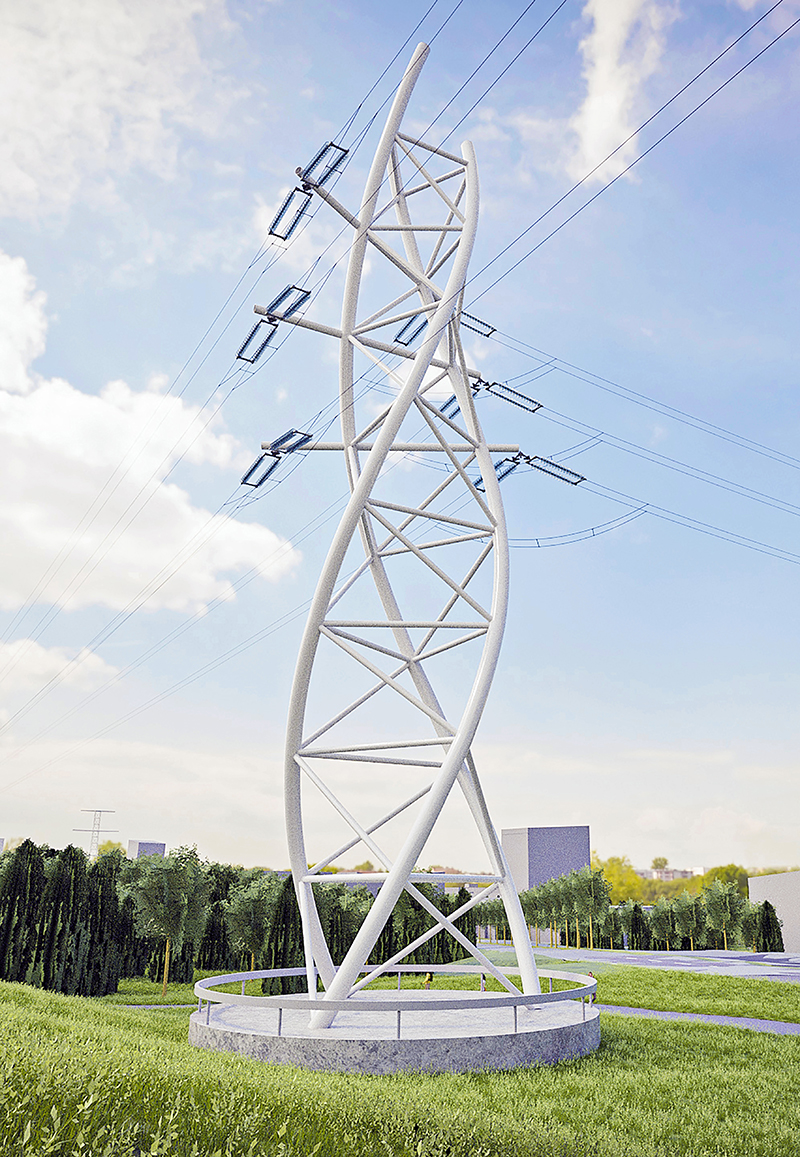Fingrid has gained a reputation as a pioneer in combining design and technical structures. Landscaped towers are examples of the company’s approach to respecting the environment in built-up areas and on sites with sensitive landscape values. Fingrid has been building towers like these since the 1990s.
“Landscape towers are built on the basis of careful consideration in areas with sensitive landscape values or special cityscapes where lots of people spend time or pass through. Thanks to their large size, they become distinctive features of the area,” says Tommi Olsson, Project Manager at Fingrid.
The landscape towers are being designed by a group of many including an architect and a steel structure and lighting designers. Transmission line modifications in Kuopio are designed and will be constructed under Fingrid’s project management.
Sinikurjet and the wonder of Imatra
One example of a historically and architectonically valuable area is the Imatrankoski rapids, where Fingrid built a substation and five landscape towers in place of the old transmission line towers. Sinikurjet, a set of three landscape towers designed as a work of environmental art by Professor Antti Nurmesniemi, is a landmark at a grade-separated junction on Ring III in Espoo.
A 62-metre-high transmission line tower known as Pirkanpylväs is another example of a landscape tower. The tower is in the municipality of Lempäälä, beside the motorway from Helsinki to Tampere. The eye-catching work was designed by Jorma Valkama, an interior architect, and a system of lighting created by lighting designer Ilkka Volanen adds the finishing touch.
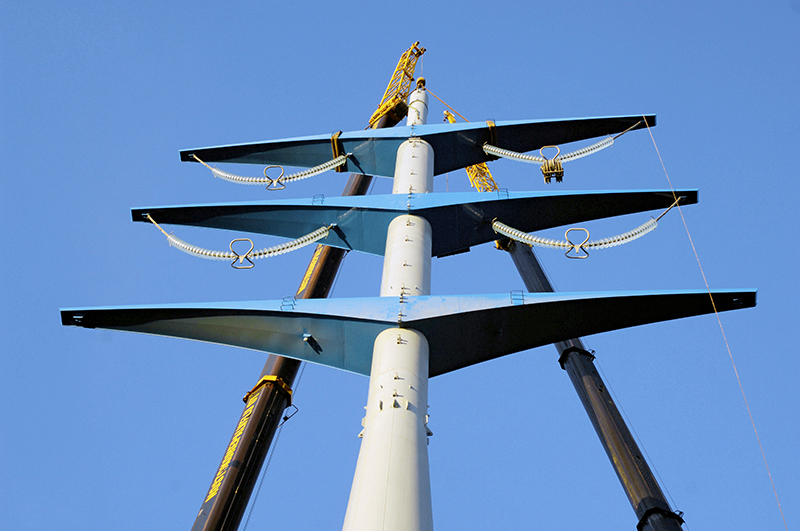
Costs related to benefits
Viäntö, a transmission line tower being built in Savilahti, Kuopio, is part of the lighting, art, design and cultural programme for the area known as the Light Masterplan. The tower is scheduled for completion at the end of 2022.
“Savilahti is the largest regional development project in Eastern Finland and a significant area of growth in the city. The aim is to create a recognisable and desirable residential, educational and employment area that provides all of the aspects of a good life – including leisure and self-development,” says Jukka Eskelinen, Planning Engineer on the Savilahti project.
“The current transmission lines need to be moved to make way for new land uses, and they will remain a visible part of Savilahti. The Light Masterplan working group considered whether these contain the elements for making the area well known.”
The design group for the Savilahti project involved all of the operators in the area, including Kuopio (Sähköverkko Oy) and Kuopio University Hospital. The costs are divided in proportion to the benefits, and the City of Kuopio is making the largest contribution.
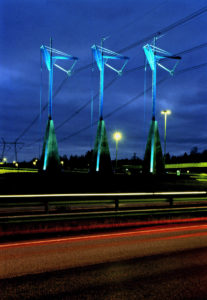
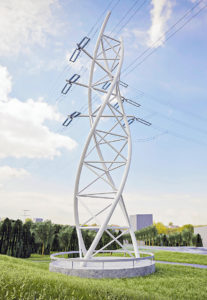
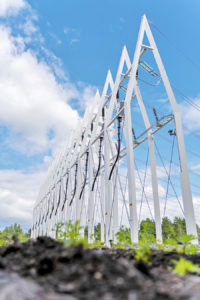
Space for creativity
“The first consideration in designing a tower is always functionality, but there is also space for creative, open-minded architectural expression,” says Bratislav Toskovic, Senior Architect at Parviainen Arkkitehdit Oy and designer of Viäntö.
“There is a clear increase in the importance of electricity transmission in urban design and the motivation of electricity companies to make these buildings an interesting part of the cityscape. This is a good basis and foundation for the success of a high-quality design.”
The Viäntö design process was guided by the location of the tower at a “roundabout” connecting three transmission line routes and the desire to reinterpret a conventional steel lattice landscape tower. Special lighting is also being designed for the tower with the intention of applying lighting to a few other basic towers in the Savilahti area.
The name of the tower – Viäntö – comes from the English word Twist. It aptly describes the spiral form of the landscape tower – and perhaps a little of the local Savo mindset. •
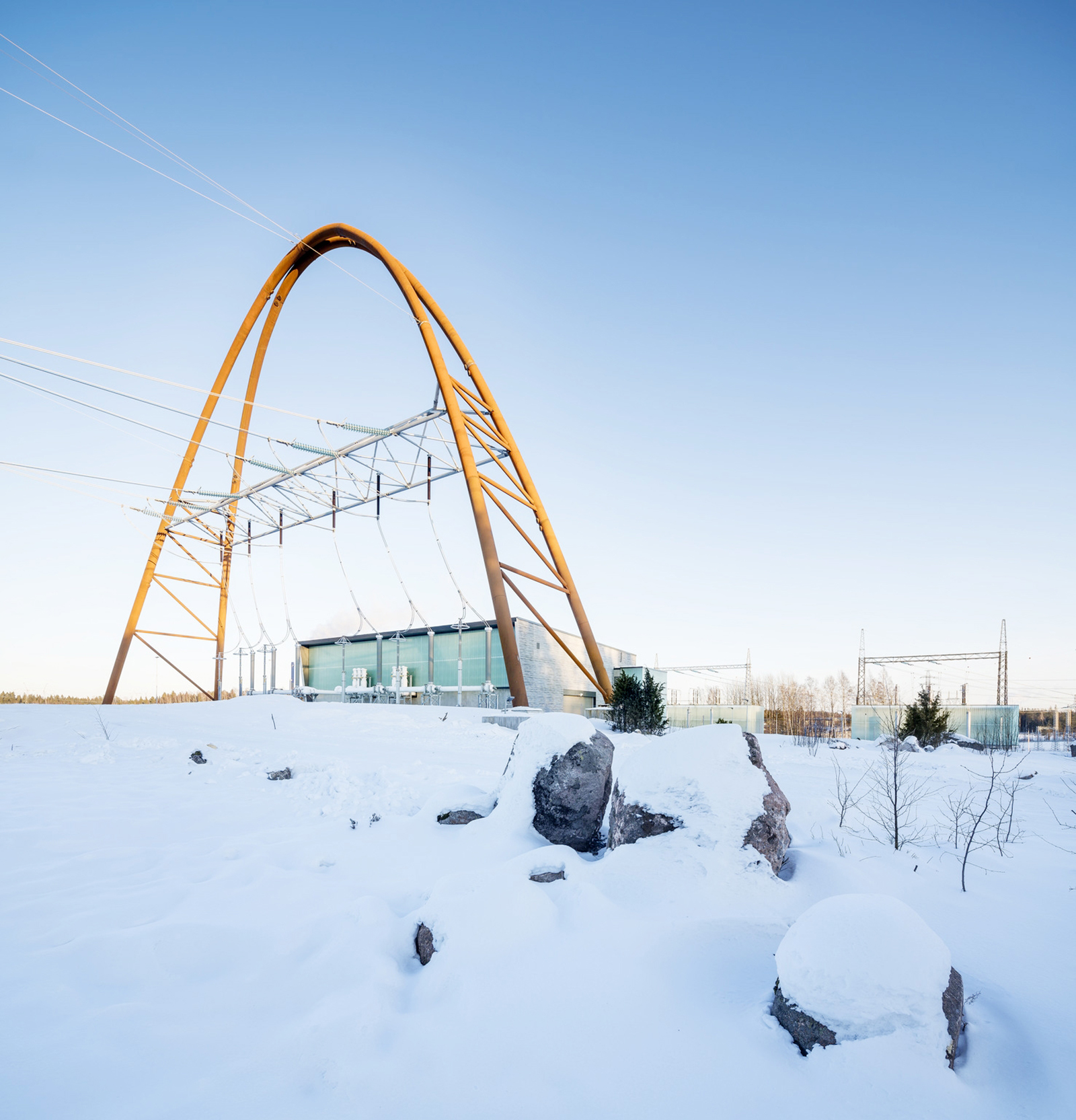
A substation like a sweet treat
The inventive architecture of Fingrid’s substation in Länsisalmi won the City of Vantaa’s Marigold Architecture Award in 2018. It was also chosen as the best in its category at the World Architecture Festival, the largest event of its kind.
The Länsisalmi substation plays a significant role in the functionality of everyday life in the Helsinki metropolitan area: the electricity for almost 800,000 residents can be transmitted via the substation. State-of-the-art technology and a very high power rating are packed inside an exceptionally beautiful and modern shell.
Länsisalmi, between Ring III and the motorway to Porvoo, has had a substation for 27 years. In conjunction with a modernisation implemented in 2016 and 2017, a 50-metre steel portal became a landmark of the substation. At the same time, the station buildings were clad in glass panels with backlighting that is turned on in the evenings.
“The architectonic concept sought inspiration from electricity and light – the visual manifestation of electricity. In this area, energy flows through the substation in parallel to the stream of people driving past,” says Bratislav Toskovic, the principal designer of the building. •
Landscape towers have little cousins out in the field
Field towers are designed for practicality, lightness and minimal scenic impact.
Fingrid’s field tower is a transmission line tower developed with the wishes of landowners and farmers in mind. The design seeks to maximise the amount of field area available for cultivation and facilitate earthworks.
The tower is free-standing, requiring no stays or supporting lines. The substructures stand out more clearly than conventional wire stays, and the bases are surrounded by protective structures. This provides space for work machines to move around, and earthworks can take place right next to the towers.
There are two models: a larger one for 400-kilovolt transmission lines and a smaller one for 110-kilovolt lines. The larger one was awarded the Grand Prix prize at the prestigious Fennia Prize 2012 design competition.
The towers are made from galvanised iron, and they have an estimated service life of 80–100 years. They can be painted if desired. The work phases required to erect and maintain the towers have been minimised, and efforts are made to time them so as to minimise the inconvenience for farmers.
Additional information: fingrid.fi/en
